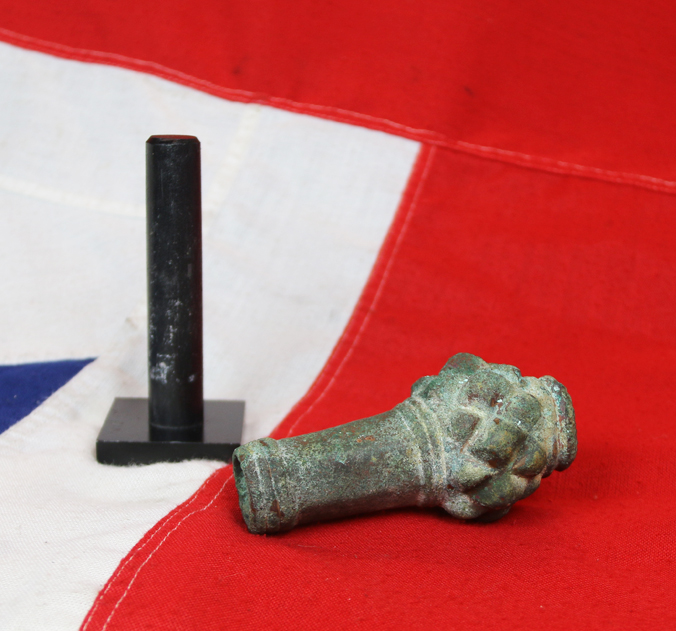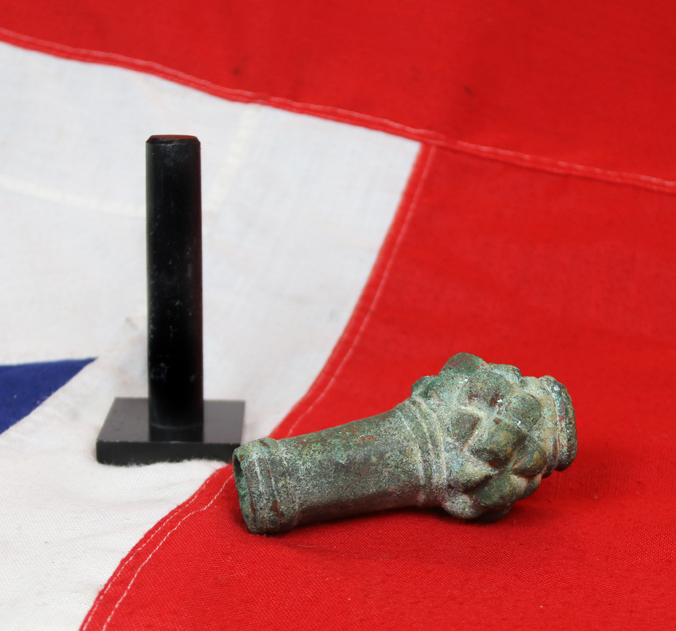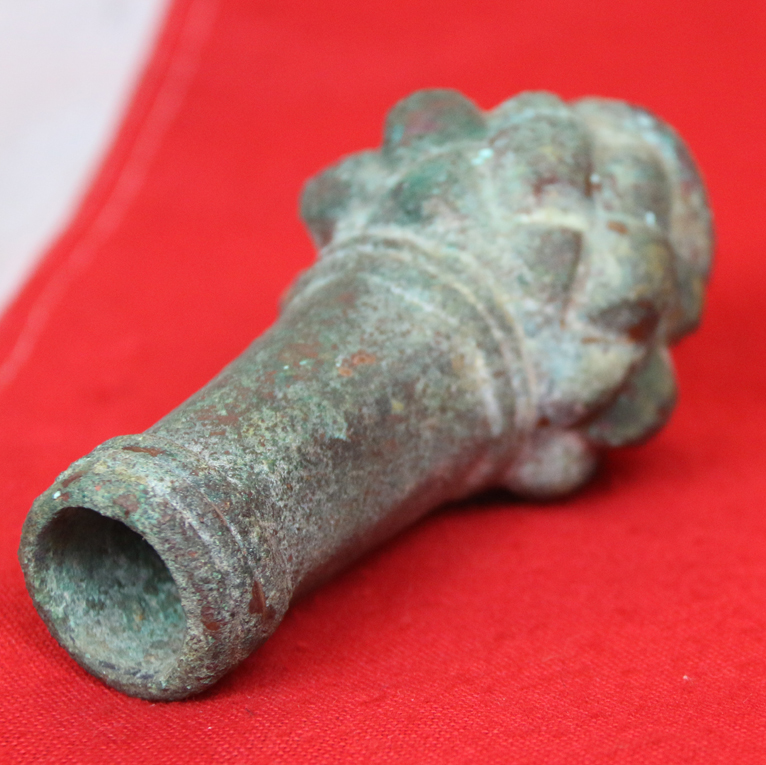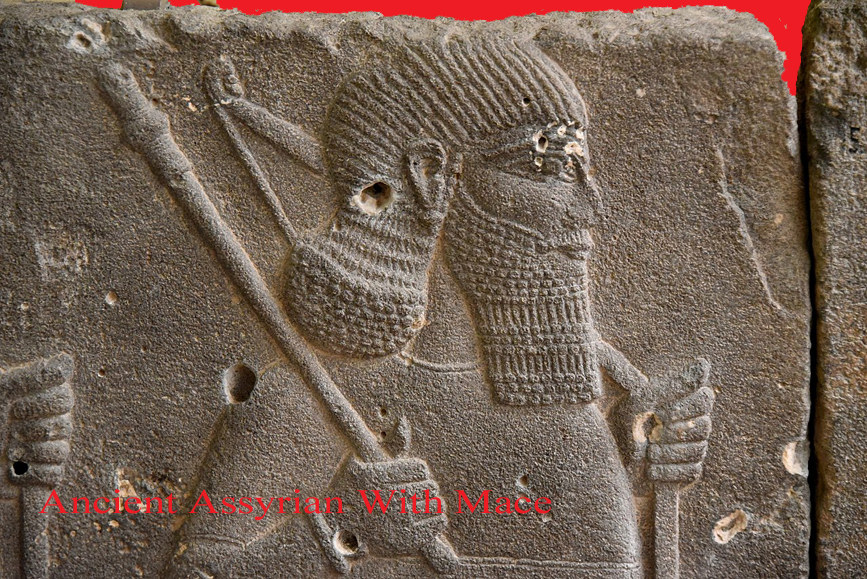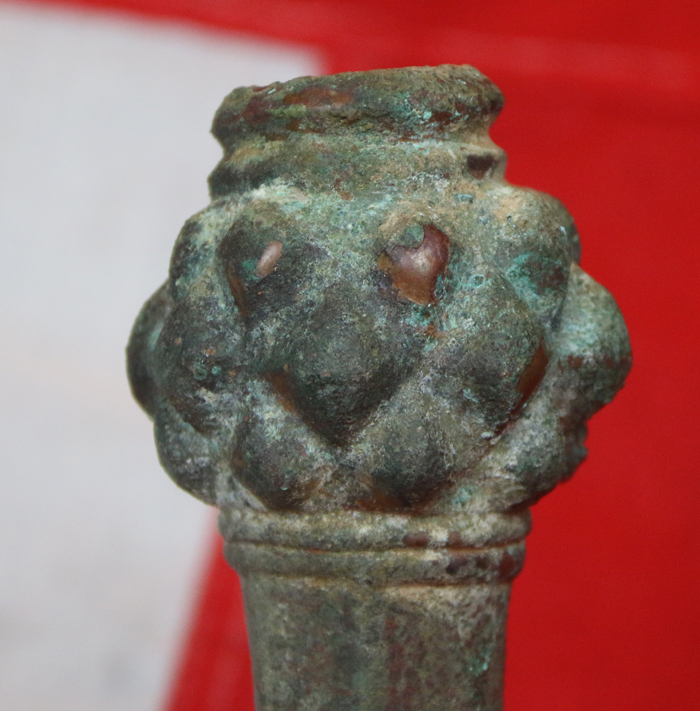A Simply Stunning Ancient Bronze Age Lobed Mace Head, from the Era of Rameses The Great, Pharoah of Egypt, Circa 1300 B.C.
Ist to 2nd Millenium B.C. The type of lobed mace style used by the Sardinian warriors that fought for Rameses IInd, alongside Thutmoses IIIrd, considered the greatest Pharoah of all the ancient Egyptian dynasties. One of the most beautiful and finely crafted examples we have seen.
One of two maces from the same era and collection. This one is the more elaborate of the two. Items such as this were oft acquired in the 18th century by British noblemen touring Northern France and Italy on their Grand Tour. Originally placed on display in the family 'cabinet of curiosities', within his country house upon his return home. A popular pastime in the 18th and 19th century, comprised of English ladies and gentlemen traveling for many months, or even years, througout classical Europe and the Middle East, acquiring antiquities and antiques for their private collections.
In use it would have slotted onto a wooden haft. The use of the stone headed mace as a weapon and a symbol of status and ceremony goes back to the Upper Paleolithic stone age, but an important, later development in mace heads was the use of bronze copper ally metal for their composition. With the advent of copper mace heads, they no longer shattered, and a better fit could be made to the wooden club by giving the eye of the mace head the shape of a cone and using a tapered handle.
The Shardanas or warriors from Sardinia who fought for Ramses II against the Hittities were armed with maces consisting of wooden sticks with bronze heads. Many bronze statuettes of the times show Sardinian warriors carrying swords, bows and original maces. Persians used a variety of maces and fielded large numbers of heavily armoured and armed cavalry (see cataphracts).
For a heavily armed Persian knight, a mace was as effective as a sword or battle axe. In fact, Shahnameh has many references to heavily armoured knights facing each other using maces, axes, and swords. The enchanted talking mace Sharur made its first appearance in Sumerian/Akkadian mythology during the epic of Ninurta. Roman though auxiliaries from Syria Palestina were armed with clubs and maces at the battles of Immae and Emesa in 272 AD. They proved highly effective against the heavily armoured horsemen of Palmyra. Photos in the gallery of original carvings from antiquity in the British Museum etc.; Ashurbanipal at the Battle of Til-Tuba, Assyrian Art, British Museum, London 650-620 BC, Limestone, An Assyrian soldier waving a mace escorts four prisoners, who carry their possessions in sacks over their shoulders. Their clothes and their turbans, rising to a slight point which flops backwards, are typical of the area; people from the Biblical kingdom of Israel, shown on other sculptures, wear the same dress, on a gypsum wall panel relief, South West Palace, Nimrud, Kalhu Iraq, neo-assyrian, 730BC-727BC.
A recovered tablet from Egypt’s Early Dynastic Period (3150-2613 BCE) shows a Pharoah smiting his foe with a war mace. The mace is complete with its display stand as shown. Approx. 6 inches high including stand. This wonderful piece would have been made and traded throughout the Western Asiatic region. As with all our items it comes complete with our certificate of authenticity. Antique ivory, 'worked' declaration for submission. We can only sell this sword within the UK, it is not allowed for export.
Code: 23021
1350.00 GBP


